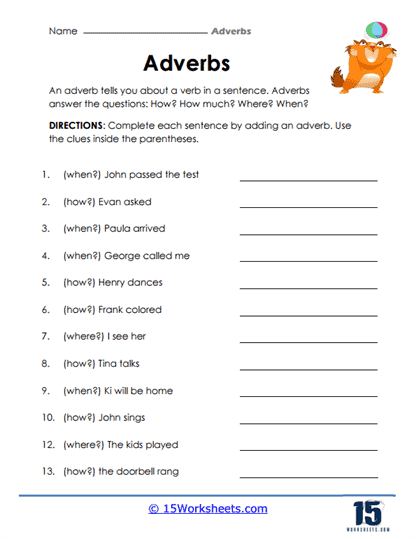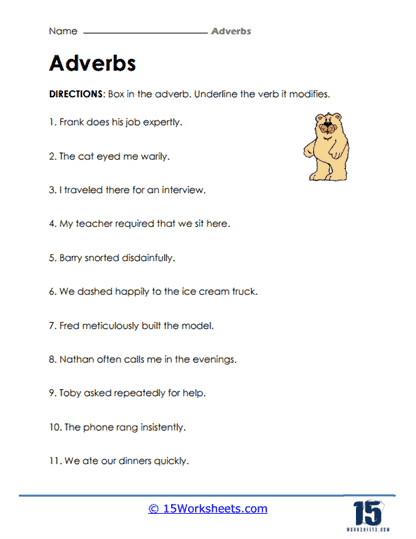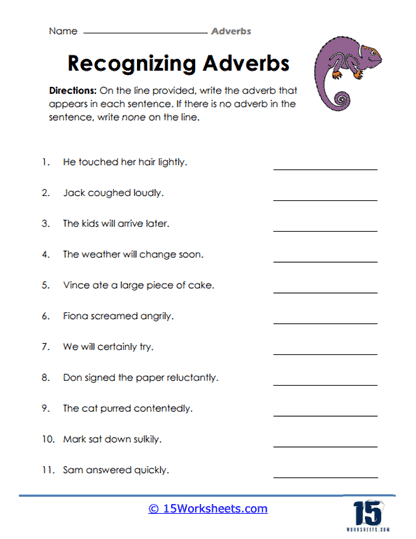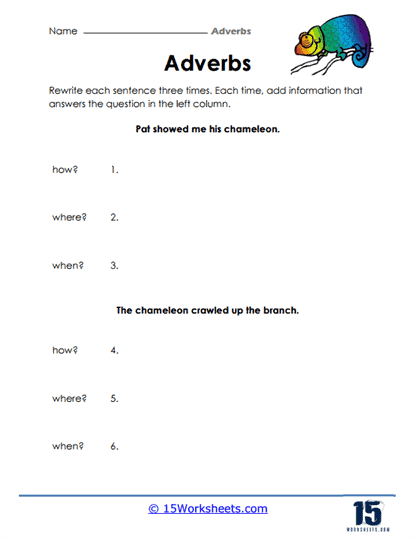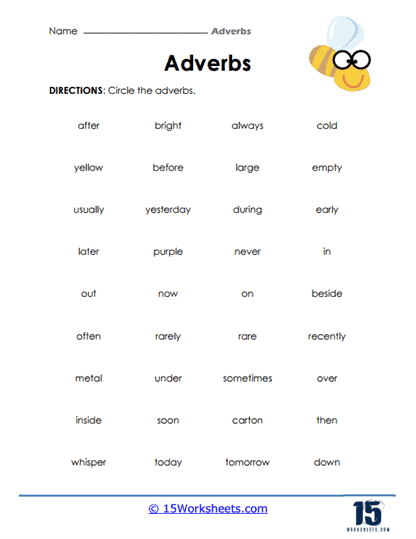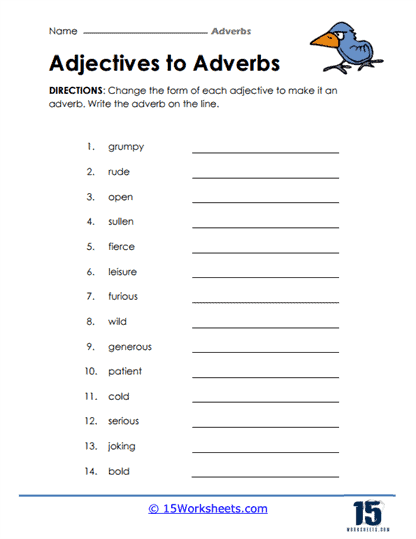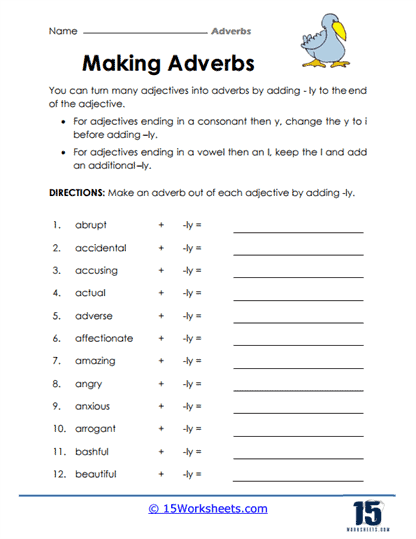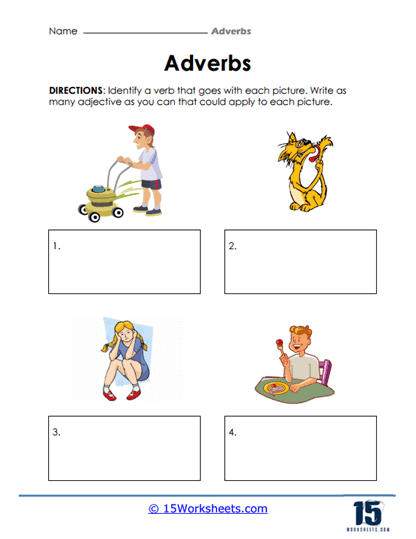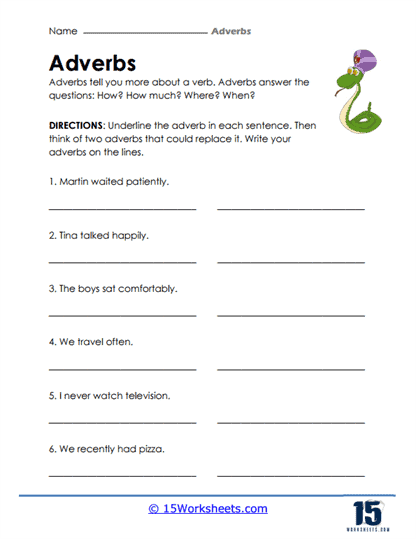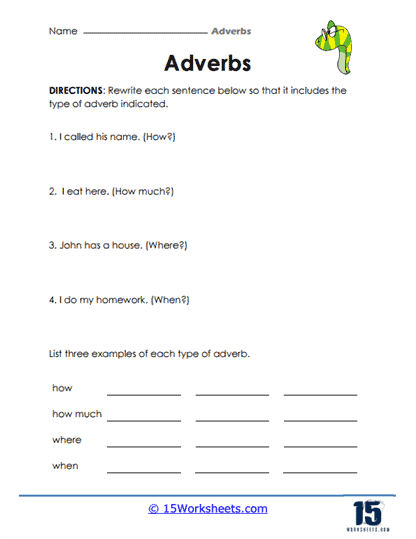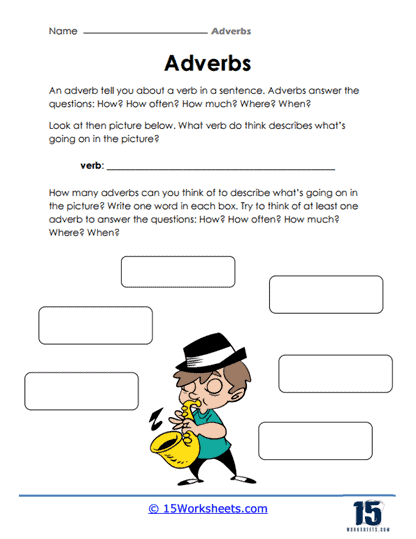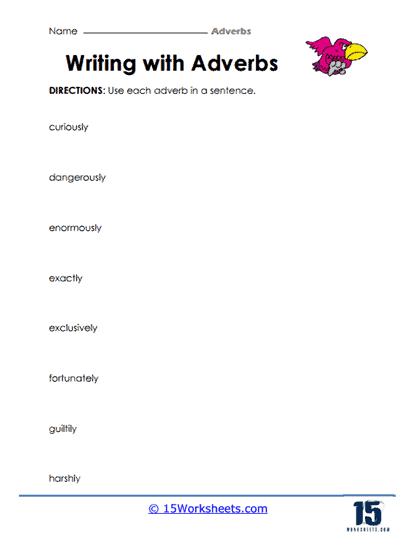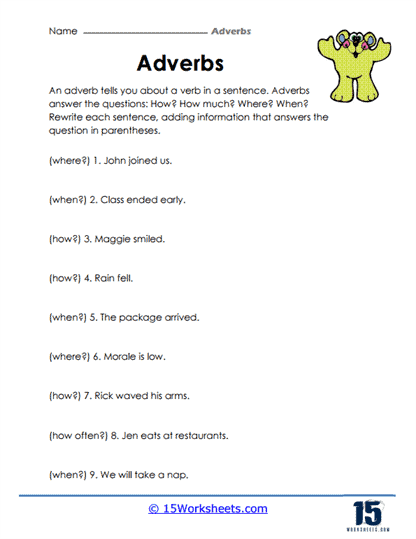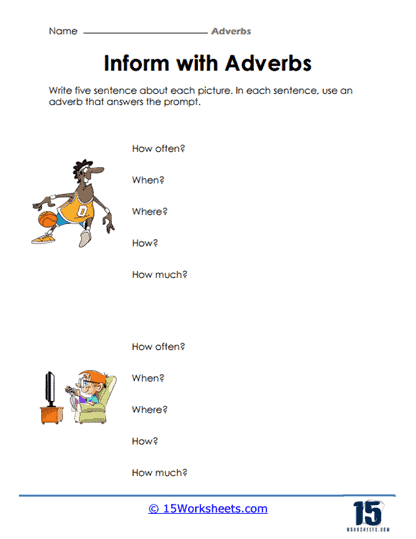Adverbs Worksheets
All About These 15 Worksheets
Our collection of 15 meticulously crafted worksheets cover a wide range of adverb-related topics, such as adverb types, formation, and usage. These worksheets are specifically designed to accommodate different learning styles and are ideal for both classroom instruction and self-paced learning.
Through answering these worksheets, students will:
- Discover the various types of adverbs, including adverbs of manner, time, place, frequency, and degree;
- Learn how to identify adverbs in sentences and differentiate them from other parts of speech;
- Develop a deep understanding of adverb formation, including the use of suffixes like “-ly” and irregular adverbs;
- Explore the proper usage of adverbs by including them in their own sentences;
- And engage in thought-provoking exercises that help solidify their grasp on adverb concepts.
Each worksheet includes clear instructions and ample opportunities for students to practice their knowledge in adverbs. In addition, the collection features a variety of formats, such as fill-in-the-blanks, sentence rewriting, and other creative writing exercises, to ensure that students stay motivated and challenged throughout their learning journey.
What are Adverbs?
Adverbs are a part of speech that primarily modify or describe verbs, providing additional information about the action or state described by the verb. However, adverbs can also modify adjectives, other adverbs, or even entire sentences. They often answer questions like “how?”, “when?”, “where?”, “how often?”, or “to what extent?”. Adverbs play a crucial role in enhancing the meaning and precision of a sentence by providing details about the manner, frequency, degree, or circumstances surrounding the action or state.
Some common examples of adverbs include:
- Manner – These adverbs describe how an action is performed or how a state exists, such as “quickly,” “gently,” “loudly,” or “carefully.”
- Time – These adverbs provide information about when the action or state occurs, like “now,” “yesterday,” “soon,” or “later.”
- Place – These adverbs indicate where the action or state takes place, such as “here,” “there,” “upstairs,” or “everywhere.”
- Frequency – These adverbs show how often an action or state occurs, like “always,” “sometimes,” “rarely,” or “never.”
- Degree – These adverbs express the intensity or extent of an action, adjective, or another adverb, such as “very,” “quite,” “almost,” or “enough.”
While many adverbs are formed by adding the suffix “-ly” to an adjective (e.g., “slow” becomes “slowly”), there are also irregular adverbs that do not follow this pattern (e.g., “well” and “fast”).
Why is it important for students to learn and master Adverbs?
Learning adverbs is important for students because adverbs are a crucial part of speech that modify verbs, adjectives, and other adverbs. They provide information about the manner, time, place, degree, and frequency of an action or a state.
Understanding and using adverbs correctly can help students express themselves more precisely and effectively in speaking and writing. For example, adverbs can make a sentence more descriptive, like “She danced beautifully” or “He speaks fluently.” Adverbs can also help convey more complex meanings, such as “She runs quickly” versus “She runs as quickly as a cheetah.”
Moreover, adverbs can affect the tone and style of writing, allowing writers to communicate their ideas more persuasively or emphatically. For instance, adverbs like “certainly,” “definitely,” or “absolutely” can convey a strong sense of certainty or conviction.
In addition, adverbs are essential in understanding and interpreting language, especially when reading or listening to texts. Students who have a good grasp of adverbs can more easily comprehend written and spoken language and draw more nuanced meaning from the text. Overall, learning adverbs is a fundamental aspect of mastering the English language and communication skills.

